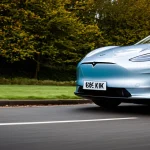Key Statistics and Recent Developments in UK Pet Ownership
Recent pet ownership statistics UK reveal a dynamic landscape reflecting evolving lifestyles and preferences. The pet population UK has experienced notable growth, with an increasing number of households welcoming pets, driven by both first-time and repeat owners. Between the previous year and now, there has been a significant rise in pet ownership, particularly among younger demographics, impacting the overall numbers and diversity of pet types.
Dogs and cats remain the most commonly owned pets, consistent with long-term trends, but their relative proportions have shifted slightly. For example, while dogs continue to dominate, cats have seen a steady increase in ownership, reflecting greater adaptability to urban living spaces. Smaller mammals and birds maintain steady popularity, but recent data indicates emerging interest in alternative and exotic species as well.
Additional reading : How Can Pet Adoption Impact UK Families Positively?
The year-on-year changes also highlight a surge in first-time pet ownership, which has contributed meaningfully to the increase in pet population UK figures. This trend often coincides with societal shifts, such as changes in working patterns and increased remote work arrangements, which make pet ownership more accessible to a broader segment of the population. This demographic shift underpins much of the recent expansion seen in overall pet ownership numbers.
Overall, the current UK pet trends underscore a dynamic and growing community of pet owners, with expanding diversity in pet types and ownership patterns. These shifts continue to influence related markets and services, indicating a vibrant and evolving pet ownership landscape in the UK.
In parallel : How Can UK Pet Owners Ensure Their Animals Live Stress-Free Lives?
Changing Demographics of Pet Owners in the UK
Recent data on pet owner demographics UK reveals significant shifts in who is choosing to keep pets. There has been a pronounced increase in pet ownership among younger adults, particularly those aged 25 to 34, marking a notable change in age trends in pet ownership. This group often consists of single-person households or young families, both of which are showing a rising tendency to invest in pets as companions and family members.
Urban versus rural divides continue to influence pet ownership, with city dwellers gravitating more toward cats and smaller pets due to space constraints, while rural residents often prefer dogs and larger animals. This urbanisation impact is key in understanding recent pet owner demographics UK, as more people live in urban settings and adapt their pet choices accordingly.
Household composition also plays a role: families with children increasingly include pets as part of the household dynamic, contributing to gradual changes in the age trends in pet ownership. Simultaneously, single-person households, including many in metropolitan areas, are adopting pets for companionship, driving growth in the pet owner demographics UK landscape.
Overall, these evolving demographic patterns are shaping the pet population, showing how societal changes in age, location, and household type directly affect pet ownership trends across the UK.
Popular and Emerging Pet Types
Recent data on popular pets UK confirm that dogs and cats continue to dominate ownership, but there is a clear rise in diversity among pet species. While dogs remain the most common, the pet population UK is increasingly embracing other animals such as small mammals, birds, and reptiles. This diversification reflects evolving lifestyles and interests, as more pet owners seek companions suited to smaller living spaces or unique preferences.
The trend toward exotic pets trend UK is particularly noteworthy. Ownership of reptiles, amphibians, and certain birds has increased, partially driven by urban dwellers who prefer pets that require less space or offer distinct care experiences. These emerging new pet species trends demonstrate how tastes are shifting beyond traditional dogs and cats, expanding the pet landscape considerably.
Factors influencing these new pet species trends include lifestyle compatibility, such as busy schedules or allergies, which can make smaller or hypoallergenic pets more appealing. Additionally, growing awareness about exotic pet care and the availability of specialised products support this trend. Consequently, the UK’s pet market is adapting rapidly, with more owners exploring alternatives to conventional pets while continuing to contribute to broader pet ownership statistics UK and current UK pet trends.








